Passing and possession
This session is about retaining and developing possession, plus switching play. It relies on smart decision making as well as excellent movement and communication between players.
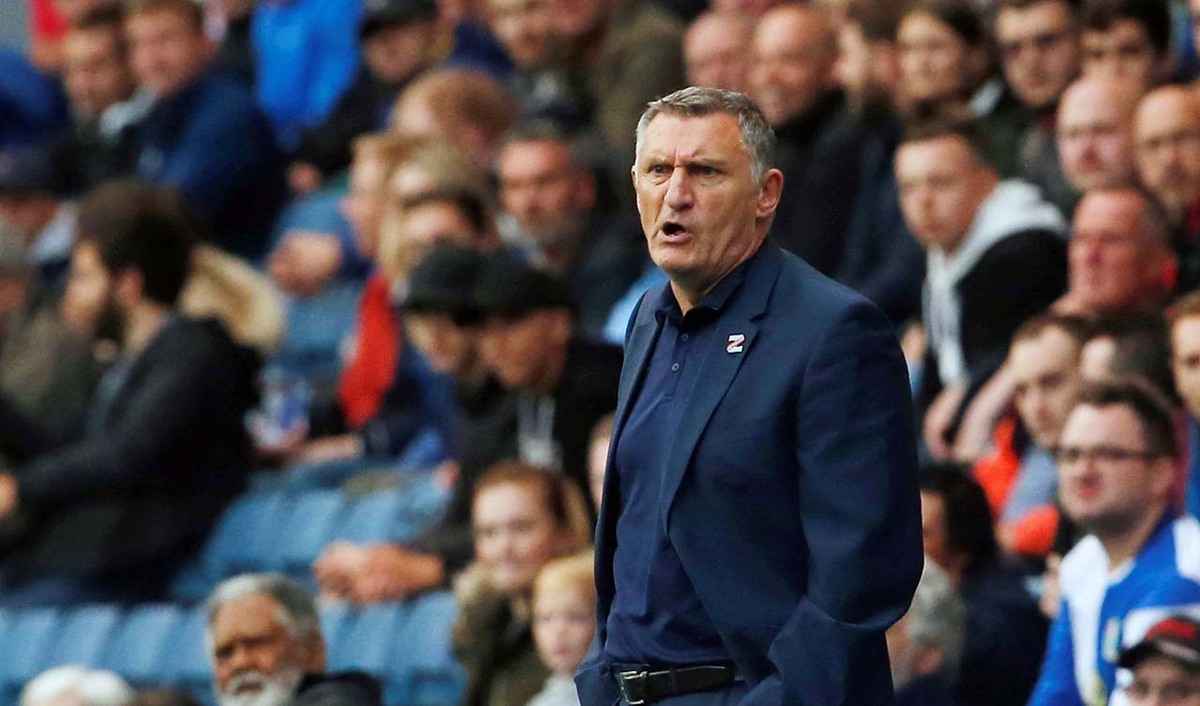
| Area | 28x26 yards |
| Equipment | Balls, cones |
| No. of Players | 18 (12 attackers, 6 defenders) |
| Session Time | Practice 30mins, development 45mins |
This session is about retaining and developing possession, plus switching play. It relies on smart decision making as well as excellent movement and communication between players.
This is an important practice for us because, in match situations, maintaining possession is vital. Doing so not only aids the creation of chances, but it serves to wear down the stamina of opposition players because they are constantly chasing the ball.
A recent feature of our play has been the scoring of late goals; keeping possession has proved vital in achieving this. In our match at Sheffield United on April 9, concerted ball retention helped create Martin Emnes’ 89th-minute winner. And Matthew Bates’ goal in the same game was a great example of play being switched, which is also a key feature of this session.
What do I get the players to do?
In a two-yard channel running across the middle of the playing area, we place four blue defenders. Either side are two groups of six reds, whose aim is to complete a minimum of three passes in passing through the middle zone. Progress this to four and five passes as players become more comfortable. Two additional blues go into the red area to press the ball. But should it be transferred, they must return to the middle zone and two new blues then press the reds in the other half. Once more, reds must construct a minimum of three passes before switching.
1a
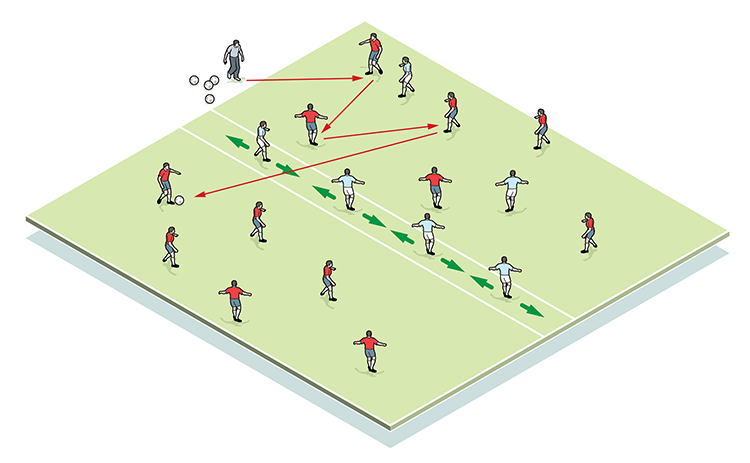
1b
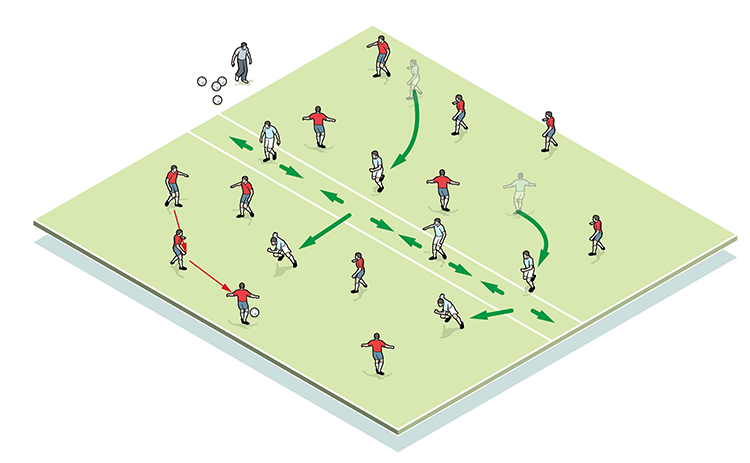
How do I progress the session?
Next we construct a 45x25-yard area, split lengthways into three 15-yard zones. This works as a 4v2 overload of reds in each zone. Reds must again construct three passes before moving the ball into the next zone. Players must stay in their allocated zones at all times.
Once comfortable with this set-up, we progress it further by setting up 5v2 in each end zone. After three passes, a red player must move into the middle zone (3v2), lay a pass, before recovering back into the end zone. The aim is to get the ball to the other end, so a player from the opposite end zone must now move into the middle zone to create the 3v2. Teams continue to transfer the ball from end to end.
In the final progression, one blue must stay in each zone, though all others can press and defend in any third of the pitch.
2a

2b
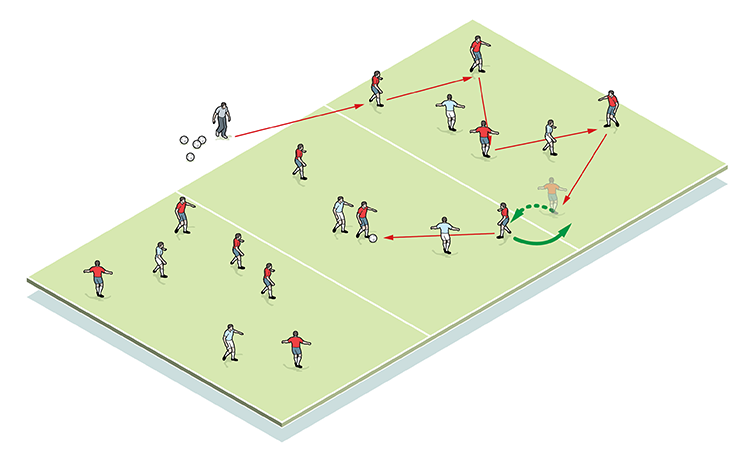
2c
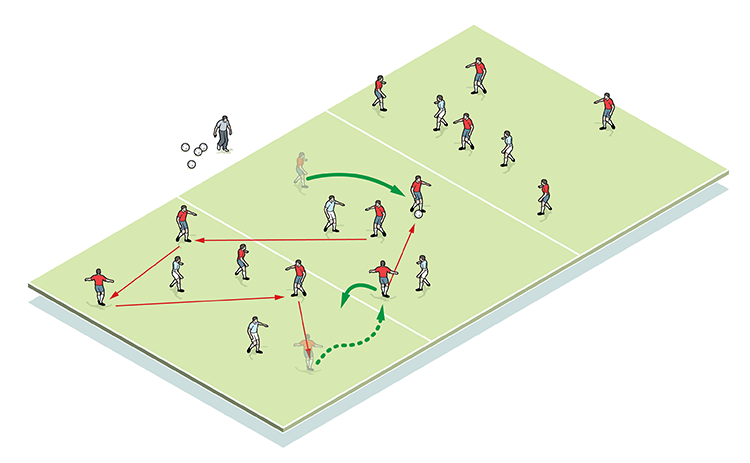
2d
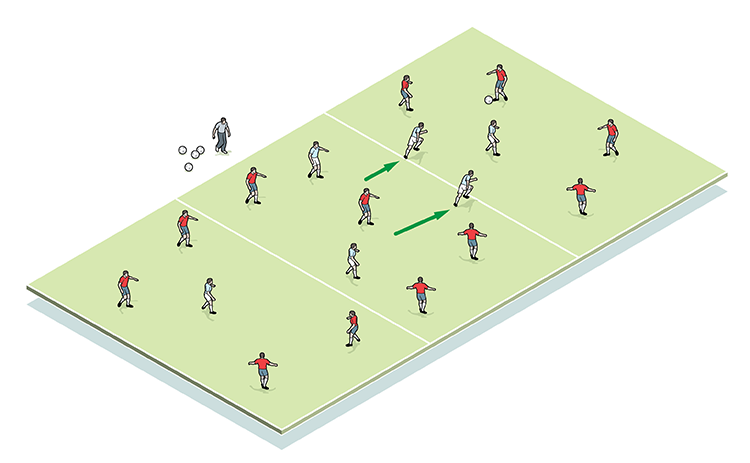
What are the key things to look for technically/tactically?
We are looking for measured possession play in different situations. Tempo, the weight, timing and type of pass is essential. Over time, players should learn the middle ground between rushing and delaying play unnecessarily, as well as the key decision of when to pass and when to dribble.
We also assess players’ movements without the ball and their ability to make angles so as to give team mates options.
Editor's Picks
Attacking transitions
Deep runs in the final third
Using the goalkeeper in build-up play
Intensive boxes drill with goals
Penetrating the final third
Creating and finishing
My philosophy
Pressing initiation
Compact team movement
Coaches' Testimonials

Alan Pardew

Arsène Wenger

Brendan Rodgers

Carlos Carvalhal

José Mourinho

Jürgen Klopp

Pep Guardiola

Roy Hodgson

Sir Alex Ferguson

Steven Gerrard
Coaches' Testimonials

Gerald Kearney, Downtown Las Vegas Soccer Club

Paul Butler, Florida, USA

Rick Shields, Springboro, USA

Tony Green, Pierrefonds Titans, Quebec, Canada
Join the world's leading coaches and managers and discover for yourself one of the best kept secrets in coaching. No other training tool on the planet is written or read by the calibre of names you’ll find in Elite Soccer.
In a recent survey 92% of subscribers said Elite Soccer makes them more confident, 89% said it makes them a more effective coach and 91% said it makes them more inspired.
Get Monthly Inspiration
All the latest techniques and approaches
Since 2010 Elite Soccer has given subscribers exclusive insight into the training ground practices of the world’s best coaches. Published in partnership with the League Managers Association we have unparalleled access to the leading lights in the English leagues, as well as a host of international managers.
Elite Soccer exclusively features sessions written by the coaches themselves. There are no observed sessions and no sessions “in the style of”, just first-hand advice delivered direct to you from the coach.









